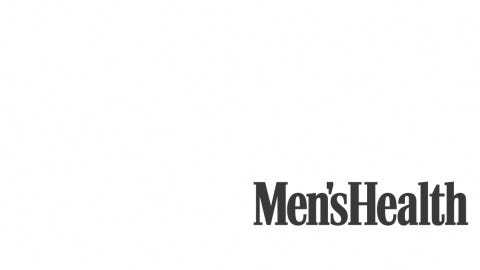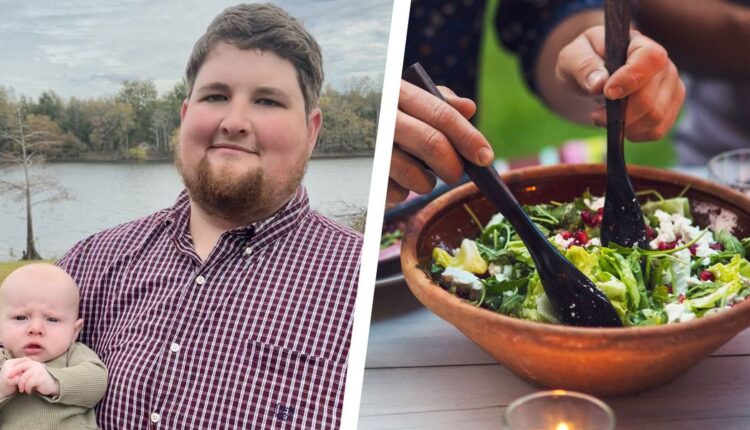In July 2019, Evan Parker was supposed to go with his wife for a prenatal checkup. But days before, a colleague noticed that his face was drooping—a classic sign of a stroke. Parker was rushed to the ER. A week later, he was still in the hospital—and so was his wife, for the delivery. Nurses wheeled him over to see the birth of his daughter. Not strong enough to hold the baby on his own then, Parker is at full strength now. He’s back at his busy warehouse-manager job and has a seven-month-old son, too. Here’s what helped him recover.
Adjust Your Meals
To reduce his risk of another stroke, Parker lost about 70 pounds. He cut out sugar, grills instead of frying (“we like blackened venison”), and piles on veggies (“I fell in love with mustard greens”). He didn’t have typical stroke risk factors—high blood pressure, high cholesterol, heart disease, diabetes. But docs found a clotting disorder and put him on blood thinners. The vitamin K in greens can mess with the meds; the key is to be consistent with how much you have, says his doc, Sheryl Martin-Schild, M.D., Ph.D., at Touro Infirmary.
Repeat, Repeat, Repeat
After a stroke, “brain cells that are neighbors to dead cells can take on additional responsibilities over time,” says Dr. Martin-Schild. “They learn through repetitive activities. Rehab is the cornerstone to recovery.” Methodically relearning to walk or picking up a light object and putting it down with precision, day after day—it’s tedious work, but Parker dedicated himself to it with a strategy he learned from his high school football coach. “You take a game one play at a time. As long as you do your job and do your best, then the outcome will take care of itself.”
More From Men’s Health

Change Your Mind
During his 40 days in rehab, “I noticed a trend,” Parker says. People bringing negativity into his room would bring him down. “I think one of the things that really helped me is the people who kept me positive.” Leaning in to that had a real benefit, Dr. Martin-Schild says. Not doing it can be a barrier to recovery. “I’ve seen plenty of young people who are far more disabled by their depression or anxiety about the possibility of having another stroke than they are from the stroke itself,” she says. “You need to live prepared and not scared.”
Young Guys and Stroke: What to Know
Mind Your Risk
The rates of stroke are increasing among people ages 15 to 49 in certain geographic areas. Kid Cudi had his at age 32, hockey pro Kris Letang at 26 and 35.
Heed the Signs
Use the letters “BE FAST” to remember the red flags: Balance loss, Eyesight changes, Facial drooping, Arm weakness, Speech difficulty or slurring = Time to get help.
Don’t Delay
Call 911 if someone shows any of the stroke symptoms. Getting help quickly completely changes the game.

Marty Munson, currently the health director of Men’s Health, has been a health editor at properties including Marie Claire, Prevention, Shape and RealAge. She’s also certified as a swim and triathlon coach.


Comments are closed.